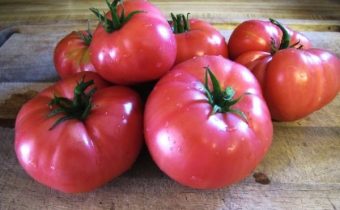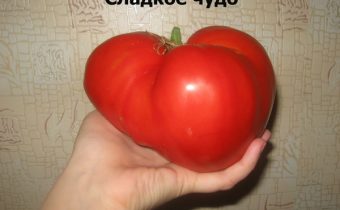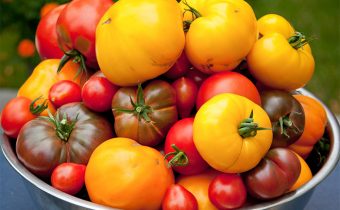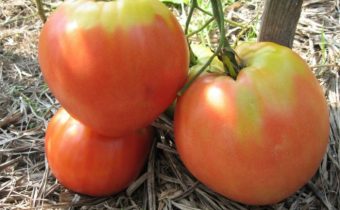What varieties of tomatoes to choose for processing on juices and pasta?
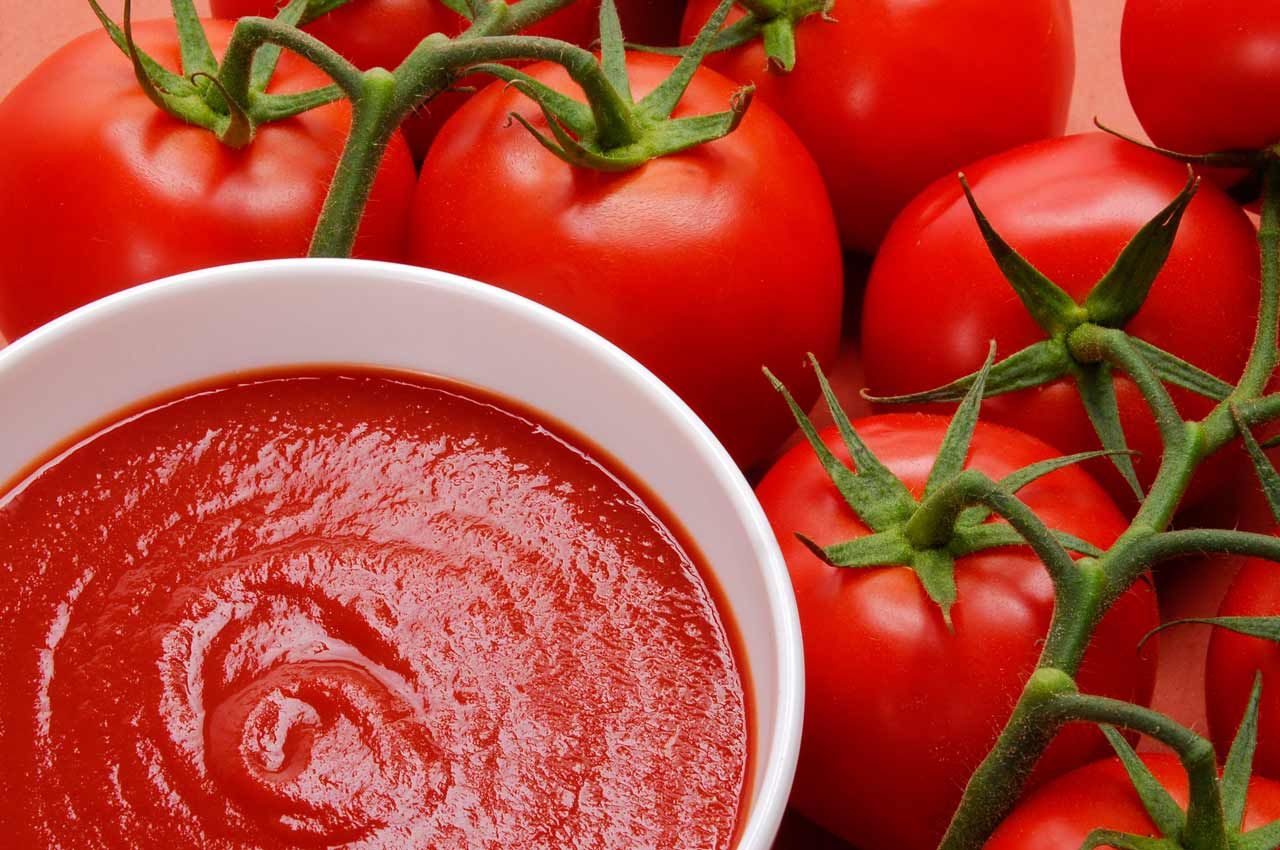
Choosing tomato seeds need to rely on the method of their preparation in the summer, as well as harvesting for the winter. The quality, taste of dishes and twists are directly dependent on the characteristics of tomatoes. Varieties suitable for salads or canned wholemeal may be unsuitable for other types of tomato products. What kind tomato varieties choose to be processed into juices and pasta, their characteristics, advantages, disadvantages.
Juice Tomatoes
To make the juice moderately thick, you need to pick large-fruited varieties with not very dense, not dry flesh. It is better to give preference to varieties with red and pink tomatoes, but you can add a little yellow to give the drink a soft, orange tint. The juice will be brightly colored with a rich sweet-sour taste if you take the fruit fully ripe on the bushes or even slightly over-ripe for the preparation.
Tomatoes, gathered in brown ripeness, ripened houses will give the drink an unpleasant sour-bitter taste.
Some mistresses for making juice take what is left of other blanks (substandard, deformed, small tomatoes). This is not entirely correct, it will be difficult to predict the quality of the finished drink, it may become too acidic, thick or liquid. The best for the juice will be large or medium in size, juicy tomatoes with thin skin and bright taste:
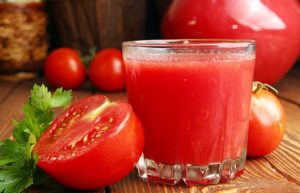
- Azores red. Indeterminate, mid-season, fruitful. Fruits are red, flat-round from 500 g to kilogram. The flesh is moderately dense, the taste is rich, pleasant. Disadvantages - the need for garters, pasynkovaniya, thermophilic.
- Altai masterpiece. Indeterminate, mid-season. Red tomatoes from 300 to 450 g, flat-round, medium ribbing and density. The flesh is juicy with a rich, pleasant taste. No cons.
- Bull heart pink. Mid-season, determinant. Productivity not more than 8 kg / m². Tomatoes heart-shaped, raspberry-pink from 200 to 400 g. The flesh is very juicy, tasty. The bush is weak, which greatly complicates the process of leaving.
- Abakansky pink. Late-seasoned, determinant. Productivity to 4 kg / m ². Fruits are pink-red from 150 to 500 g, they are flat-round in shape, slightly ribbed. The flesh is tasty, medium density. The disadvantage is weak resistance to typical diseases.
- Tretyakov. Determinant, mid-season hybrid. Fruits from 200 to 400 g, heart-shaped, slightly ribbed, pink, tasty, very juicy. Productivity about 7, 5 kg / m ². The only negative is in very fragile stems that require a neat garter.
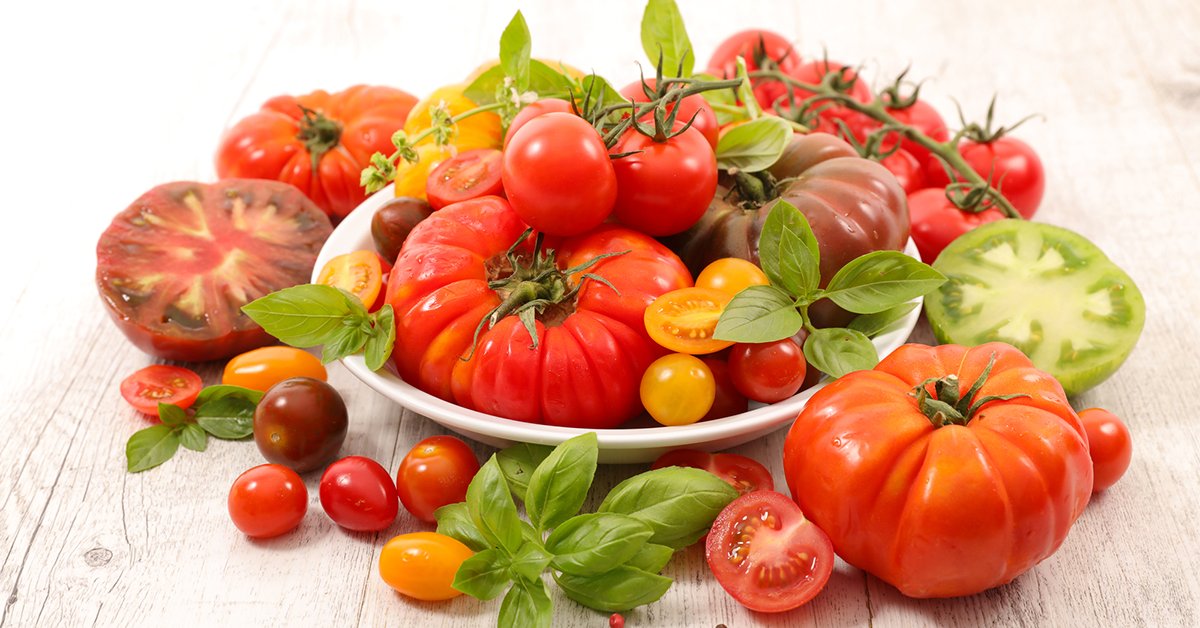
When self-searching, you need to read the information from the back of the seed package, the best will be those varieties that have the mark "for processing into juice." According to gourmets, a really tasty drink is obtained from a mixture of different tomatoes, each bringing its own particular flavor. To prepare a liquid juice, it is advisable not to be zealous with squeezing, and to get a thick drink, you must additionally grind the flesh through a fine-meshed sieve, until there are only skins with seeds.
Pasta Tomatoes
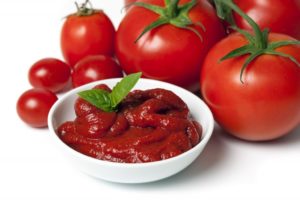
A good paste has a thick consistency, for cooking you need to choose fleshy tomatoes with dense pulp, a minimum amount of liquid (almost without seed chambers). Such characteristics are possessed by small spherical or plum-like fruits. Only fully mature specimens should be recycled, otherwise there will be a lot of waste, the paste will turn brown. The best varieties:
- Krasnodar Medium early, semi-determinant, high-yielding. Tomatoes are flat-rounded, red from 70 to 110 g. The pulp is dense, tasty. A variety of thermophilic, capricious, requires preventive treatments from diseases.
- Volzhsky. Yield, thermophilic, determinant, mid-season hybrid. Fruits up to 100 g are cylindrical with weak ribbing, red. Pulp is dense with rich, good taste. Volzhsky bred for the south, requires a garter, resistant to major diseases of culture.
- Success. Early, standard, high-yielding. Fruits are plum-shaped, red, dense from 30 to 70 g. The variety is resistant to all adverse factors, as well as good taste, there are no flaws.
- Miracle of the market. A medium early, indeterminate variety that cannot be grown in cold regions without shelter. The main advantage is an excellent immunity to diseases and pests. Tomatoes are red, rounded to 600 g, dense flesh with good taste.
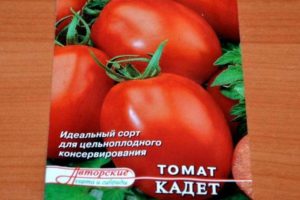
- Cadet. Mid-season, determinant. Yield is average. The fruits are red, cylindrical, dense by 50–60 g. A cadet is valuable for its taste, as well as for its increased immunity to disease.
- Lighthouse. Indeterminate, mid-season. Tomatoes are round, raspberry to 40 g. The flesh is tasty, dense. Productivity to 4 kg / m ². Advantages - the possibility of growing in the northern regions, resistance to viruses, fungi. Disadvantages - fresh taste of pulp in rainy summer.
To obtain a thicker, mushy consistency, the paste is recommended to be boiled down, however, along with the juice, useful substances evaporate from the product.
For the preparation of pasta suitable varieties recommended for whole canning, they are dense, not prone to cracking. In order to have less waste during processing, pick tomatoes with thin or medium-hard skin. In the paste it is better to recycle red or dark pink fruit, then it will have a bright, beautiful color.
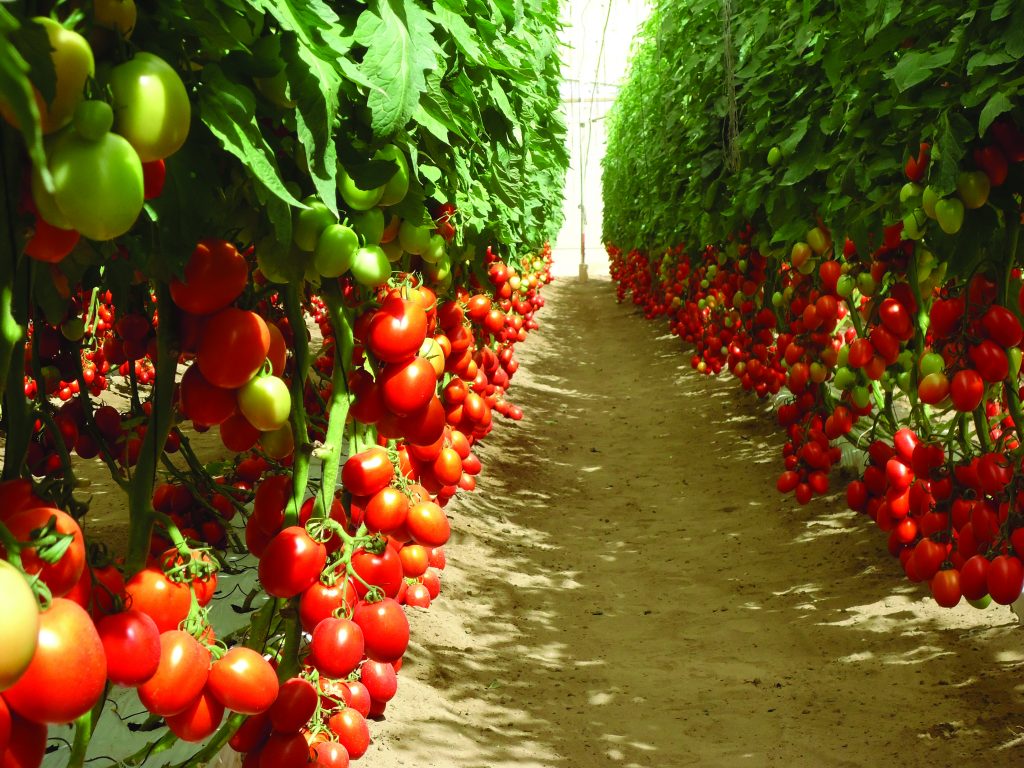
The ability to choose the right variety of tomatoes for different purposes will help housewives to avoid trouble in the process of cooking blanks. For those who prefer sweet juices and pastes, it is better to choose tomatoes with a high content of sugars, varieties of hybrids with a balanced taste will suit lovers of savory “sourness”. To get good yields you need to acquire zoned tomatoes.


